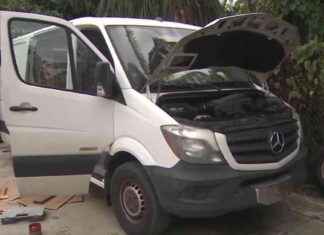The West is determined to help Ukraine as much as necessary to defeat the Russian invader but never to the point of appearing in Moscow’s eyes as a co-belligerent party and escalating into a larger or global war. There are weapons that NATO and its partners will never put in Kyiv’s hands.
Ukrainian President Volodymyr Zelensky keeps insisting that his army needs more weapons; more modern and more powerful weapons. At the moment, lighter weapons and cavalry units have taken a backseat to the action and what is needed, from the Ukrainian point of view, is firepower and, above all, powerful and long-range anti-missile systems. And in that, the West can only half help.
The most powerful, accurate and proven US missile system is that of the Patriot launchers, which were deployed and used by the United States in Iraq and became very common in the war chronicles.
A platform as powerful and long-range as the Patriots would give the Ukrainian forces an overwhelming advantage over the Russians.
But the Patriots will not reach Ukrainian soil for two main reasons –coinciding with other weapons and other countries of origin– that could be grouped into one: not to provoke Russia more than necessary. The anti-missile system that, for example, prevented attacks against Israel or US positions during the two Gulf wars requires highly specialized personnel and, in the current circumstances, would force the deployment of US personnel on Ukrainian soil.
That is unfeasible.
That is one of the two reasons, but there is a second one, which is that its eventual deployment would be understood by Moscow as direct US involvement in the war, whether or not there were US boots on the ground.
Zelensky’s urgencies regarding Ukraine’s need for more robust and heavier anti-missile systems, and in general with a more sophisticated arsenal, have intensified since Russian actions have focused on the Donbass region, over which an artillery storm has been launched both with missiles and ammunition projected by fixed or mobile guns.
“We need modern anti-missile weapons to clip the wings of Russian projectiles,” said the Ukrainian president, who acknowledged that his armed forces cannot counter them with their reaction systems at their disposal.
Israel’s iron dome or iron shield system would be another advanced anti-missile kit that would better balance the balance of fire in the Ukraine war. It is an economically expensive system, but highly efficient. The entry into service of the iron shield has been crucial for the Israelis to have neutralized in the air dozens of projectiles and rockets launched, for example, from the Gaza Strip.
Zelensky asked the Israelis last March during a video intervention in the Jerusalem Parliament to transfer the “iron dome” system to them, but without success. The Israeli position, for the moment, is to increase humanitarian aid but not to get involved in the conflict by sending air defense systems, advanced weapons or any attack systems.
The West in general is in a permanent balance between the need to help Ukraine and not irritate Russia excessively, and this often results in arms transfers that take too long or do not arrive at all. The United States and Germany are two countries that exemplify this situation very well and in both cases when there were advanced anti-missile systems in the middle.
The United States has finally sent to Ukraine – they are already there – an undisclosed number of advanced artillery systems known as Himars. They are medium range. They destroy targets with great precision at a maximum distance of about 300 kilometers if their configuration is adjusted to that of a tactical ballistic missile launch if it is not mounted with six rockets, which have a smaller radius of action. It is a missile platform of higher quality than the comparable Russian models and that will give an advantage to the Ukrainian side eager to counteract the almost infinite reserve of Russian artillery ammunition.
Germany, for example, has also been hesitant at times and has postponed as long as possible the shipment of anti-missile systems that Zelensky specifically requested of Foreign Minister Olaf Scholz. Germany is especially focused on defensive weapons, however, Berlin has given the green light to send four Mars II-type rocket launcher systems, with a range of about 80 kilometers, in addition to several IRIS-T units, its best anti-aircraft defense system. .
The general commitment that the West has asked of Ukraine is that the modern missile batteries delivered as aid are not used against Russian territory. This does not mean, and it has already happened in several episodes of combat, that the Kyiv forces use their own arsenal to carry out attacks on targets on Russian soil.
The largest Western donations to Ukraine have been made by the United States ($25.45 billion) and, by far, the United Kingdom ($2.53 billion). Just to maintain the state apparatus – not counting weapons – Kyiv needs 5 billion dollars a month.
Regardless of how large the international aid is, it is very difficult for Ukraine to receive, as it claims, modern combat aircraft – that was already ruled out at the beginning of the war – except for models from the former USSR that allied countries still have; nor will it have certain intelligence systems such as Predator or Global Hawk drones. They will have to continue trusting Western intelligence to provide them with the coordinates that allow them to choose selected and relevant targets, but to kill them with the weapons they have.








